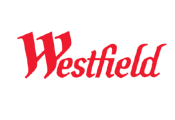Most of you have read a lot about automation here and how great it is for your business. After all, automation revolves around making sure that you’ve got a process that works. In this episode, Avon Collis from Relevate shares amazing marketing automation while keeping it human, such as a bot that’s not trying to talk or sound like a human but just trying to understand the human process that they go through, because we should never automate the human elements. A huge part of automation is people who are doing bits and pieces to ensure that the processes don’t break. In other cases, it goes the other way around. The process is there to make sure the human doesn’t break. Listen to the podcast to learn more about marketing and automation.
Josh: Everyone out there in the podcast world, we’ve got a fantastic guest for you today. A lot of you’ve heard me talk about automation and how great that is for your business. What a lot of you don’t know is how to implement that or what that can actually do for your business. I talk about it and I definitely get everyone else to go out there and do some research on it. I’ve got Relevate here and one of their main, main guys here, which is Avon. And Avon goes through all of your emailing processes from start to finish, any of your online campaigns and helps you set it up in a completely automated way. So, Avon, what would be the number one thing that someone should be looking for when automating their online email campaigns?
Avon: Keep it human. I think everyone goes automation, it’s a bot, it’s something that’s going to do this wonderful thing for me, but at the end of the day, you’re basically just trying to… You’re dodging work yourself, talking to all of your customers and having the system do the same. So if you can have it do the same now, one mistake a lot of people make is they try to make a bot sound like a human, when everybody knows it’s a bot. So part of keeping it human is acknowledge it’s a bot, make it kind of quirky and funny, but it’s still a bot. And then in your marketing communications, just realise that they’re going to know, they’re going to be able to figure out that this is automated or it’s not correct.
And keeping it human means to me, not trying to talk or sound like a human, but just trying to understand the human process that they go through. So you might change the… Like if someone gets to two emails that are irrelevant to them, they’ll often lose focus or change their mind about you. If you can have a number of… The messaging evolves intelligently with where the customer is at, then that’s a very clever way to go.
Josh: Cool. I agree completely. You should never automate the human elements. Automation should be around making sure that you’ve got a process that works. So the process that works, in my example, would be when the Model-T Ford was developed, that had huge amounts of automation although it had a huge amount of people still doing bits and pieces, it meant that there was a process to go from start to finish to make a car. And that start to finish process had a document that was around it. The same as McDonald’s has a document that follows the process, although they might have a machine that automatically flips a hamburger patty over and tells you when the chips are ready, so you don’t have to stand there with a timer yourself. It still means that there’s an automated process, but they’ve got the people there to make sure the processes don’t break. And that can be that it’s the people that are reaching out to make sure that when you’re at a certain stage in the funnel or a certain trigger has happened, bring people into the equation. Would that be a fair way of understanding?
Avon: Yeah, but I would also say it goes the other way too. Like the process is there to make sure the human doesn’t break.
Josh: Yeah. No.
If you need assistance with your automation, talk to a dork. Fill out the form below to book a free one-hour consultation.
Avon: I’m sure you’ve had staff where you go, all right, this is the job, you do steps one, two, three, four, five, six, and seven. And then they forget to do step three, or they can’t be bothered, or something goes wrong. So automation helps to increase the success percentage of all the little things that go on in the business that make up the end result. The other thing too is once you’ve mapped that process out, you’ve basically got a fixed target that you can make changes to. So if you need to speed it up, slow it down, you’ve got a baseline from which to modify, add processes in, remove steps if they’re no good and you can pull stats and data, where ordinarily, you kind of had to go on gut feel if you were doing it yourself.
Josh: Yeah. So once you’ve got those processes and steps in place, if it’s not working, the beautiful thing is you can then critique it, massage it and allow for to work and refine it and split test it and do all sorts of cool stuff, yeah?
 Avon: Yeah, exactly. Right. Yeah. One of the big misconceptions around automation is that they think automation is always the system will do everything. Well, generally not, sometimes the system will get everything ready for the human to take over at the right point. And you might say for example, with an email sequence, you’ll know that you might get a harder close rate when emails are six days apart, instead of seven days apart. Being able to make that small change and have that data and do those split tests can have a massive impact on the way that the human actually feels on the other end of that. So at seven days they might generally feel that you’re not following up fast enough and maybe at five days, they go now you’re in my face too much, but at six days, it’s just right.
Avon: Yeah, exactly. Right. Yeah. One of the big misconceptions around automation is that they think automation is always the system will do everything. Well, generally not, sometimes the system will get everything ready for the human to take over at the right point. And you might say for example, with an email sequence, you’ll know that you might get a harder close rate when emails are six days apart, instead of seven days apart. Being able to make that small change and have that data and do those split tests can have a massive impact on the way that the human actually feels on the other end of that. So at seven days they might generally feel that you’re not following up fast enough and maybe at five days, they go now you’re in my face too much, but at six days, it’s just right.
Josh: Yeah. The sweet spot.
Avon: Yeah. The sweet spot. And you’ve just got to figure that out over time with testing.
Josh: And when you go through email marketing campaigns and setting this stuff up, there’s a lot of different tools out there and there’s some that masquerade around as something that they’re not and I’ve tried my fair share of ones that do not do what they say they’re meant to do. You open up the box and it’s just a bunch of parts, not anything that’s going to be to help you build something. It’s kind of like a broken Ikea cabinet or something like that. So when I’ve spoken to people about email marketing in the past, they’ve gone, “Yeah. Yeah. Yeah. I know. I’ve got MailChimp.” Now, what would you say to someone that has that sort of attitude?
Avon: So the definition of a campaign is a series of processes that have actions that lead towards an ultimate end goal. Now, in MailChimp a campaign is a single email. So, by definition, it doesn’t do what it should do in terms of having a campaign with an end result. And the end result might be someone walking in the door view of your business, making a purchase, making an inquiry of some kind. So, you can’t expect to throw a newsletter with a whole bunch of stuff at someone and then have them go fall over themselves and go, “Oh my God, I have to buy.”
Josh: Yeah. You have to build a relationship first.
If you need assistance with your automation, talk to a dork. Fill out the form below to book a free one-hour consultation.
Avon: And you’re talking about platforms that say I do this or that, I’ve been really frustrated with GetResponse. Now, some people say, “Oh, I want to just get the cheap software because it doesn’t cost me much.” Well, actually it ends up costing them more in development time for me to build out all of the stuff because in MailChimp you haven’t really gotten much in the way of automation. In GetResponse we have to build the email somewhere else, then go back to where the automation is and then link it up manually. So ideally like I prefer to work in platforms where you can go step, by step, by step, drill down into what the email is, go to the next step, drill down to what that is, go to the next step and you can see the whole picture. So I understand what was going on a [inaudible] life cycle story for that one customer and this is that campaign thing coming. I had to print out every email, put them up on the wall and basically make a-
Josh: Make a flow chart.
Avon: Yeah. Like a flow chart, like a Beautiful Mind all around the [inaudible] room, just so that I can understand the journey the customer’s going to go on, because the customer understands the journey they are on and if it’s a crap one, they won’t buy.
Josh: Well, Beautiful Mind, one of my favourite movies. Perfect. Anyway. Yeah. And you don’t want to have to go to this trouble to be able to build something out there and being cheap is expensive. A lot of the time you think about what it is that you’re doing. If you’re trying to bring more leads in, and if that’s for the B2B space, that could be a changing, putting an extra $10,000 a month into your pocket or more, probably more. When you’re looking at like the B2C space, that could be a revenue of a product that it is sold in quantity and bringing in a significant amount. But either way, you’ve got either very, very high quality leads that you’re wanting to make sure, there’s few of them, but you want to make sure they have a great experience or significant amounts of lower value leads that are going to be experiencing the journey and overall, it could be summing up to an amount of money comparable.
So you want to make sure that the journey is right in critiqued and has been refined and thought out. And it’s also a tool that you’re not jumping between, I’ve read and [inaudible] from this one, but I’ve read stories about people moving from say, MailChimp and it sounds like we’re picking on MailChimp today, but moving from MailChimp to ActiveCampaign, or moving from ActiveCampaign to Ontraport, or whatever the case is and when they’ve done the move, their send quality scores go down a whole bunch of other issues occur because of the different mail servers that are then sending it out to you. They need to build up your rapport with the mail servers and, I guess, what I’m saying is it would be sensible to go for a tool that’s going to work with where you want to be, rather than where you’re at now. Would that be fair to say?
Avon: I think that’s a really good way of putting it, I might actually steal that.
Josh: Everyone, it’s on a recording.
Avon: Yeah. Look, I think that really sums it up quite well. A lot of people sort of, they do that I want the cheap thing right now, but then the migration costs can be massive.
Josh: Ah, huge.
If you need assistance with your automation, talk to a dork. Fill out the form below to book a free one-hour consultation.
Avon: Definitely lose data in that, like all of the connections, the lead store value, there’s the stuff that just does not export. And then the other problem is once you do move everything over or even if you don’t move everything over, you start bringing up things like Zapier and like a Lead Page thing or you bring together 10 tools to do one job, where there’s another product that does it all in one. And you’re trying to duct tape all these things together, links get broken, data gets lost. I heard of a guy who had a subscription product that wasn’t linked up and it wasn’t operating properly and he lost a million dollars in revenue.
Josh: Yeah. No, that’s not nothing, that’s a being cheap is expensive, getting back to that isn’t it. Far out.
Avon: Very, very much. So, yeah. The two things you said is being cheap is expensive and buy for where you want to be, not where you’re at. That’s probably two nuggets of gold that anyone could pick up and should absolutely hold close and use that when they’re making a decision about the platforms they’re going to buy.
Josh: Yeah. And I guess for the majority of it, now I’m just using a blanket statement here, we’re not talking generally that big of a sway between the product costs.
Avon: You spend more on yourself, as a business owner you should at least value your time at 200 bucks an hour.
Josh: Yes. Exactly.

Josh: You’re exactly right. So we invested heavily 2009 in our first, it’s actually, I lie, 2007, I went we need a CRM system. And so being the dork that I am, I thought let’s just build it from scratch. I want something that’s going to do exactly what I want it to do. And so in 2007, I built from scratch this beautiful system, worked on mobile phones, worked on the back end, it was a Symbian operating system, worked on a web browser. And it allowed for any of the techs that were working with us to be able to book their time in and then it would look at the kilometres that they drove to wherever the client was from their, at that stage, home address.
So it then meant that it would work out their kilometres per hour, how much it was charging, it was doing all their logbooks. It was doing everything for them. It was a brilliant piece of kit. And I built this and it worked great, but the problem was, it got to 2010 and it’d been working really, really well. But the amount of time that I was spending on maintaining this as new APIs came out from Google and everything else, it was more of an overhead.
Now, if I sold that on to 10 other tech companies, I’d be probably not sitting here talking to you right now, I’d be doing something completely different. But it would have been a tool that we were selling instead of the service of IT. So the decision was to get rid of this tool, buy into a tool that’s going to work for our business. Now, the one that we bought into cost us $870 a month. That is more expensive than most of the CRM tools that are out and about there. And I can say it was the single best decision that I ever made.
You have a look at $870 a month. Let’s make it round numbers, at a grand. We’ll call it a grand a month, $12,000 a year. Find an employee that works 24 hours a day for you, seven days a week for $12,000, that doesn’t get pregnant, doesn’t get sick, doesn’t go on holidays, doesn’t ask for pay rises. It does all this cool stuff and keeps all of your customers happy. You’re not going to find it. And I justified it to myself that way and I have had not looked back.
If you need assistance with your automation, talk to a dork. Fill out the form below to book a free one-hour consultation.
Avon: I tried to justify it another way because a lot of the times people just get caught up in the fact that it’s software. And they’re like, “Why should I pay for it? It’s a thing.” Think about it this way, a bookkeeper, so for me I don’t mind doing some of the books, but there’s sure as hell someone else that’s better at it, that does it in half the time. And they might charge me 50 bucks an hour, but they’ll do in two hours what takes me five or six. Just because they are good at it. And if you can apply that theory across over to the software, then that helps people to equate it in their mind a little bit more.
And you hit the nail on the head. Yeah, 800 bucks is a lot, but it doesn’t get sick, doesn’t get pregnant, doesn’t whatever, it doesn’t forget tasks and having your existing staff spend 50% less time doing the admin on a job, just the admin time alone of those staff could be a $1,000 a month, $2,000 a month. Think about how much [inaudible] these people.
Josh: Exactly.
Avon: People are highly expensive, in Australia, in 2020.
Josh: Yeah. I agree completely, meat and seats cost stacks.
Avon: Meat and seats, I like it.
Josh: Yeah. So it costs stacks of money and you want to have them as efficient, as optimised as possible.
Avon: Yeah, so this is probably a bit of win, but it is bloody hard to be a business owner or an employer of people in this day and age. Such a litigious environment, if you don’t have a 1,000 processes written out, documented out today, then you can be hung, drawn and quartered and next thing you know, you lose your house. So people often don’t want to hire or they don’t want to have these industrial disputes. So, software again, the last few times I’ve thought about hiring someone I’ve just bought a new piece of software.
If you need assistance with your automation, talk to a dork. Fill out the form below to book a free one-hour consultation.
Josh: When was the last time the rate to super went up for software? It just makes sense. Software, especially if you engage someone, I guess, without tooting our own horns, like yourself or like us, that can look laterally at a problem and look at a way that this could be achieved differently. I had someone that was there editing and doing everything they could possibly do with podcasts for us and they were spending 30 to 40 hours a week doing that.

If you could do it in a month. Awesome. If you can’t engage someone’s services that can and get and get things sorted in a way that works for your business and save you guys time. Removes liabilities. And when I say it, I don’t mean firing people, but I do mean if someone up and left, where would that leave your business? So just removing liabilities.
Avon: People don’t like boring, repetitive tasks, that’s the thing that people hate. So if you get rid of that, if you automate it, then you free people up for the more high-level tasks and then their jobs become more fulfilled, they enjoy what they do, they feel as though they’ve got some personal growth and they want to continue working for you in a positive way. Maybe designing a new product or coming up with a new idea, all sorts of things.
Josh: Yep. Well, for anyone that is listening here, if you jump across to Relevate, I’m going to put a link here, is there any certain page they should maybe jump onto so that you can-
Avon: It’s actually under development at the moment. So why don’t you jump onto my personal page, avoncollis.com. Then you’ll at least find a little bit about me. Relevate, when it’s back up and running, it will be relevate.com.au.
Josh: Cool. No worries. Well, I love having you on the show and if anyone has any feedback, make sure to jump across to iTunes, leave us a review, give us some love and stay good. Talk to you soon.
[module-379]




























